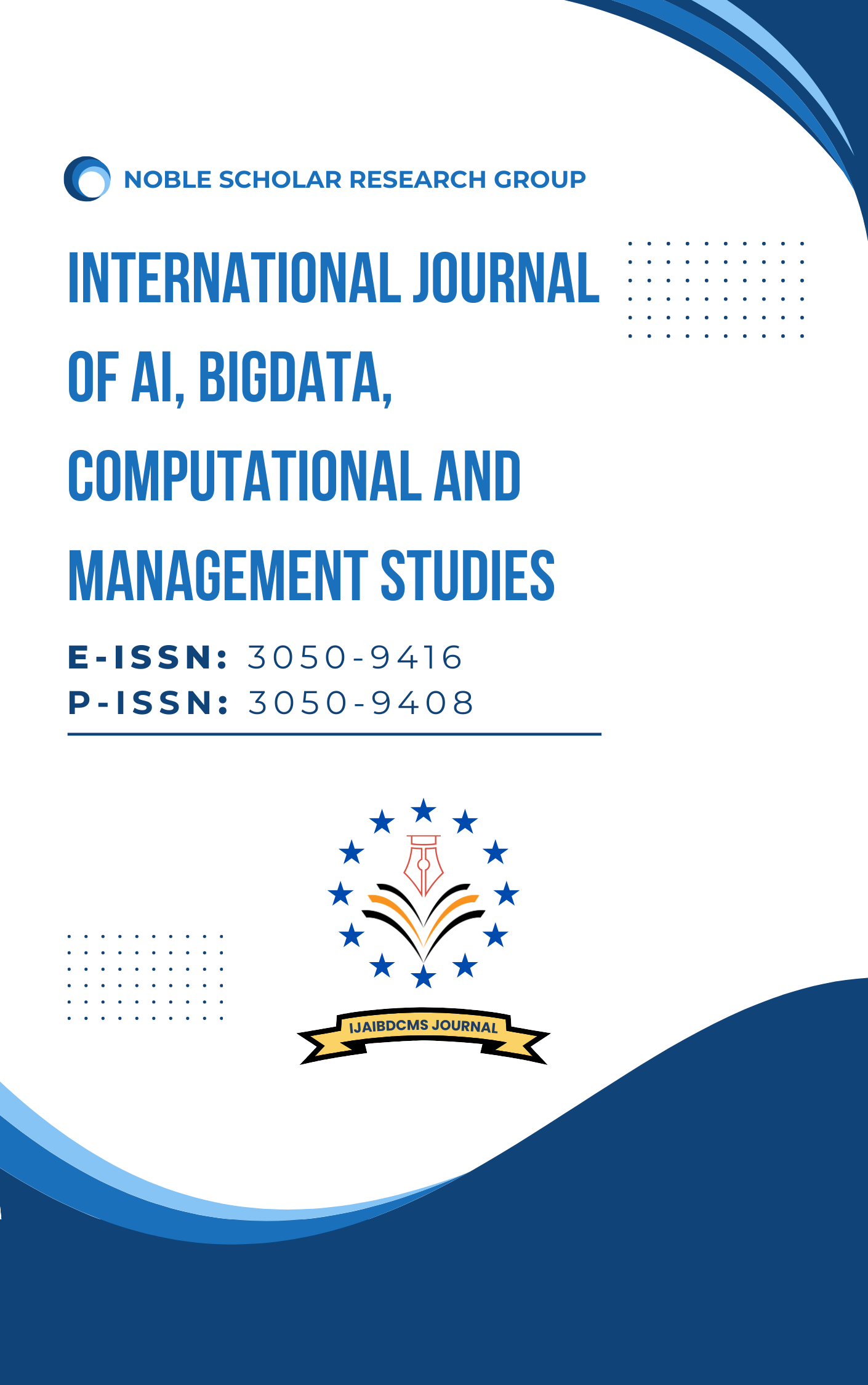Predictive Modeling of Revolving Credit Balances Using High-Dimensional Financial and Behavioral Data
DOI:
https://doi.org/10.63282/3050-9416.IJAIBDCMS-V4I1P110Keywords:
Revolving Credit, Predictive Modeling, High-Dimensional Data, Machine Learning, Financial BehaviorAbstract
The forecasting or the study of revolving credit balances, particularly through the use of special cards known as credit cards, has come to be a very important aspect of what the new era of financial risk exposures and consumer credit control is all about. Due to the rising growth of high-dimensional financial and behavioral data, the chances to use machine learning and advanced analytics to develop more accurate and scalable predictive modelling have appeared. This research is expected to examine the possibilities of higher-dimensional data, such as transactional, demographic, psychographic, and behavioral identifications, to forecast the balances of the revolving credit structures. Our proposed technique combines the principles of feature engineering with ensemble learning and dimension reduction (e.g. Principal Component Analysis (PCA) or Autoencoders). We use and contrast models, including Random Forest, Gradient Boosting Machines, and Deep Neural Networks, on a dataset collected from a synthetic panel of financial behavior data and published data sources. The findings indicate marked improvement in accuracy by more than 20 percent with ensemble methods, particularly when using XGBoost, when compared to traditional linear models. Also, some behavioral variables such as the frequency of payments, trends in online spending compared to offline spending and rates of the use of the credit facility were identified. The work gives a methodological framework as well as empirical insights on how multidimensional data can enhance credit scoring and financial forecasting mechanisms
References
[1] Crook, J. (2002). Credit scoring and its applications. Journal of the Operational Research Society, 52, 997-1006.
[2] Hand, D. J., & Henley, W. E. (1997). Statistical classification methods in consumer credit scoring: a review. Journal of the royal statistical society: series a (statistics in society), 160(3), 523-541.
[3] Lessmann, S., Baesens, B., Seow, H. V., & Thomas, L. C. (2015). Benchmarking state-of-the-art classification algorithms for credit scoring: An update of research. European Journal of Operational Research, 247(1), 124-136.
[4] Martens, D., Vanthienen, J., Verbeke, W., & Baesens, B. (2011). Performance of classification models from a user perspective. Decision Support Systems, 51(4), 782-793.
[5] Berg, T., Burg, V., Gombović, A., & Puri, M. (2020). On the rise of fintechs: Credit scoring using digital footprints. The Review of Financial Studies, 33(7), 2845-2897.
[6] Jin, Y., Zhang, W., Wu, X., Liu, Y., & Hu, Z. (2021). A novel multi-stage ensemble model with a hybrid genetic algorithm for credit scoring on imbalanced data. IEEE Access, 9, 143593-143607.
[7] Zhang, X., Yu, L., Yin, H., & Lai, K. K. (2022). Integrating data augmentation and hybrid feature selection for small sample credit risk assessment with high dimensionality. Computers & Operations Research, 146, 105937.
[8] Guyon, I., & Elisseeff, A. (2003). An introduction to variable and feature selection. Journal of machine learning research, 3(Mar), 1157-1182.
[9] Hastie, T. (2009). The elements of statistical learning: data mining, inference, and prediction.
[10] Van der Maaten, L., & Hinton, G. (2008). Visualising data using t-SNE. Journal of machine learning research, 9(11).
[11] Jolliffe, I. T., & Cadima, J. (2016). Principal component analysis: a review and recent developments. Philosophical Transactions of the Royal Society A: Mathematical, Physical and Engineering Sciences, 374(2065), 20150202.
[12] Jones, S. (2017). Corporate bankruptcy prediction: a high-dimensional analysis. Review of Accounting Studies, 22, 1366-1422.
[13] Jun, H. B., & Kim, D. (2017). A Bayesian network-based approach for fault analysis. Expert Systems with Applications, 81, 332-348.
[14] Watthayu, W., & Peng, Y. (2004, August). A Bayesian network-based framework for multi-criteria decision making. In Proceedings of the 17th international conference on multiple criteria decision analysis.
[15] Hon, P. S., & Bellotti, T. (2016). Models and forecasts of credit card balances. European Journal of Operational Research, 249(2), 498-505.
[16] Smeulders, R., & Heijs, A. (2005, July). Interactive visualisation of high-dimensional marketing data in the financial industry. In Ninth International Conference on Information Visualisation (IV'05) (pp. 814-817). IEEE.
[17] Dixon, M. F., Halperin, I., & Bilokon, P. (2020). Machine learning in finance (Vol. 1170). New York, NY, USA: Springer International Publishing.
[18] Rundo, F., Trenta, F., Di Stallo, A. L., & Battiato, S. (2019). Machine learning for quantitative finance applications: A survey. Applied Sciences, 9(24), 5574.
[19] Gogas, P., & Papadimitriou, T. (2021). Machine learning in economics and finance. Computational Economics, 57, 1-4.
[20] De Prado, M. L. (2018). Advances in financial machine learning. John Wiley & Sons.



